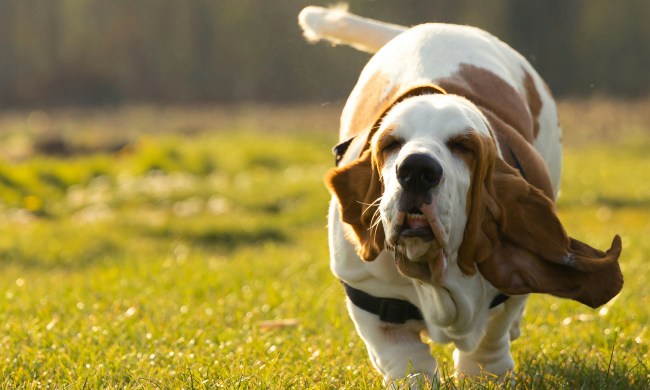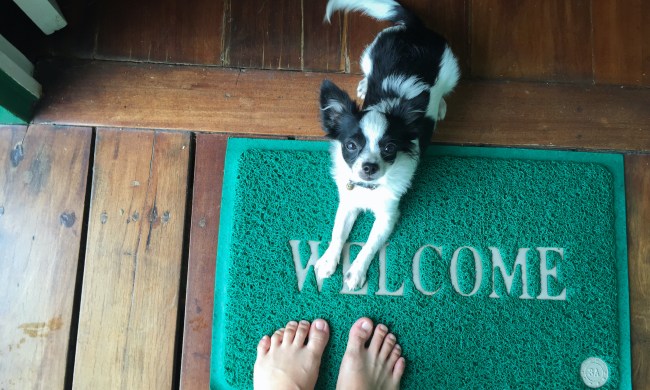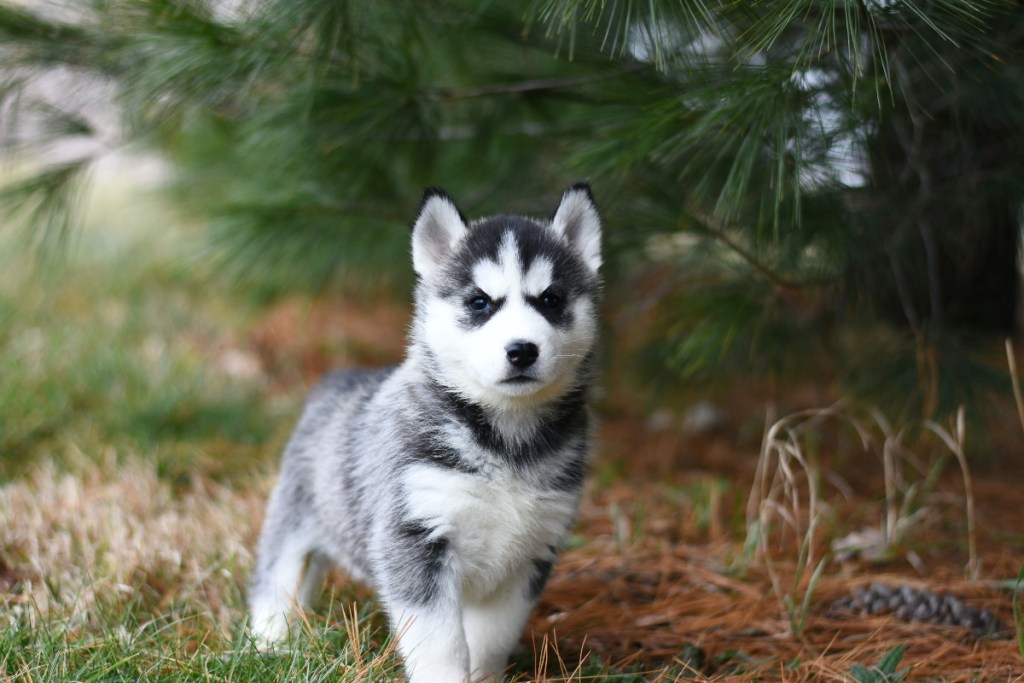
Famous for their energy, tantrums, and professional opera skills, Siberian huskies are truly something else. Honestly, they can be hard to keep up with. Understanding husky language is a lot more straightforward. From playful postures to misleading tail wags, we’ll review them all. Before you know it, it’ll feel as if you’re reading your dog’s mind.
It’s important to remember to look over their whole body — and not one feature alone — when determining their mood or desires. The same behavior can have multiple meanings, so you’ll need to know how to read their body language from nose to tail. Ready to dive in?
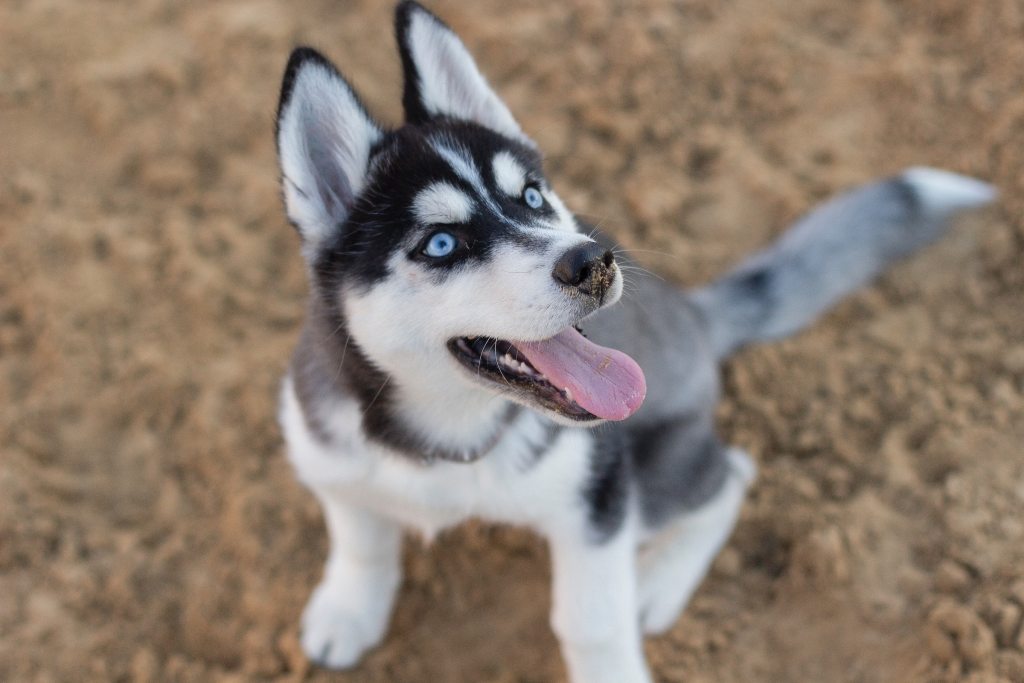
Are huskies aggressive? What kind of behavior can I expect when bringing home a husky?
While huskies are well known for their expressive facial markings, they’re typically not as angry as they look. These sled dogs are incredibly social and unlikely to show unprovoked aggression, though combative behaviors can occur with dogs of any breed. Fear is a leading cause of aggression that can affect any breed with equal likelihood, though an individual dog’s personality will give you a better idea of what to expect.
The American Kennel Club notes that huskies are especially playful, open to strangers, and highly adaptable, so you’re bound to have a pup who’s more excited to say hello than to fight. You can thank this breed’s history as team sled dogs for its agreeableness in a variety of homes and situations. They’re even known to be friendly and gentle with children, though some huskies don’t know their own size (or strength) and can easily knock over smaller kids. It happens!
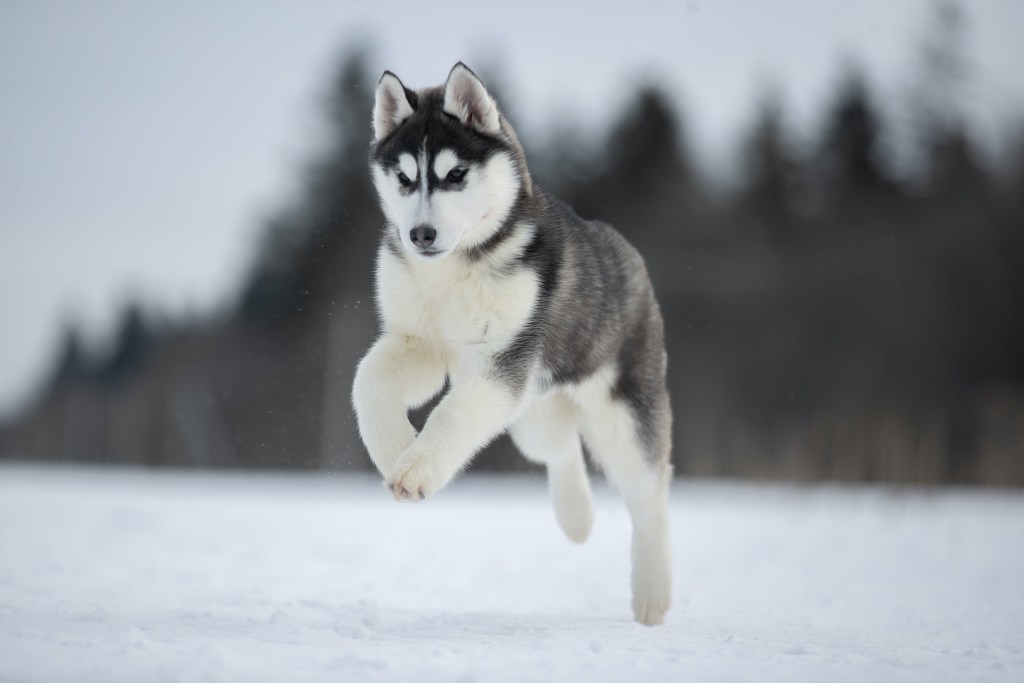
Understanding husky body language: What do certain postures mean?
Here’s what some of the most common gestures and behaviors mean to a husky:
Posture
Dogs use their body language a lot like people do, so it can be easier than you think to interpret your husky’s mood from their posture. If your pup is feeling confrontational, angry, or even just afraid, they may try to look bigger and more threatening. You might notice their hackles — the coarse hair on a canine’s neck and back — stand on edge. A dog in this state will be tense in their face and body, and they may bark.
In contrast, a happy husky will have an extremely relaxed posture. Their mouth may hang open slightly, showing you their tongue or even teeth, and they may close their eyes when lying down. An anxious or unhappy dog won’t let their guard down like this, so any signs of sleep, play, or seeking attention are generally positive signs.
Bowing is another posture dogs use to communicate their harmless intentions, whether in play or in greeting. Bowing to their human, though, can be a sign of respect and even love, according to Snow Dog Guru.
Wagging tail
A tail wag usually means exactly what you think it does: contentment, pleasure, or joy. In these cases, you’ll also see a calm body, relaxed face and mouth, and other signs of husky happiness. Tail wagging during play can be a sign of enjoyment or of letting you know that they had fun, but they’re ready to move on to another activity.
VCA Hospitals reminds pet parents to pay attention to the tail’s position and speed of the wag when making a judgment. Generally speaking, the faster the wag, the more excited the dog is. A very slight wiggle of the tail, for example, is a common indicator of hesitation or insecurity, whereas a rapidly wagging tail (this is called flagging) can show either great stress or extreme excitement.
If a husky is holding their tail neutrally (down by their ankles) or slightly raised while wagging, they’re most likely feeling happy. A tail tucked between the legs is another story, though, as dogs do this when they’re anxious or fearful. On another note, you may see an erect tail, wagging or not, during one of the breed’s famous husky tantrums or when they’re otherwise unhappy.
Ear position
One less obvious signal of a dog’s emotions is the position of their ears. When a husky is relaxed, you might notice their ears drooping off to either side, though they may perk up when listening. An alert dog’s ears will stand at attention, while a nervous pooch will pull their ears straight back.
If your dog seems to scratch at their ears more often than usual and doesn’t seem to have an ear infection, they may be stressed — just as people bite their nails or develop other nervous habits.
Nose licking
This is another surprising sign of stress in canines, though not every lick should be a cause for concern. Excessive unprompted nose licking is more indicative of nervousness, while some nose or chop licking while being petted should be taken as the highest of compliments. If your husky makes a funny, stretched-out face when they get a good scratch, this is another awesome sign. Dogs also lick their nose for medical reasons, so be sure to check up on them if you notice a pattern.
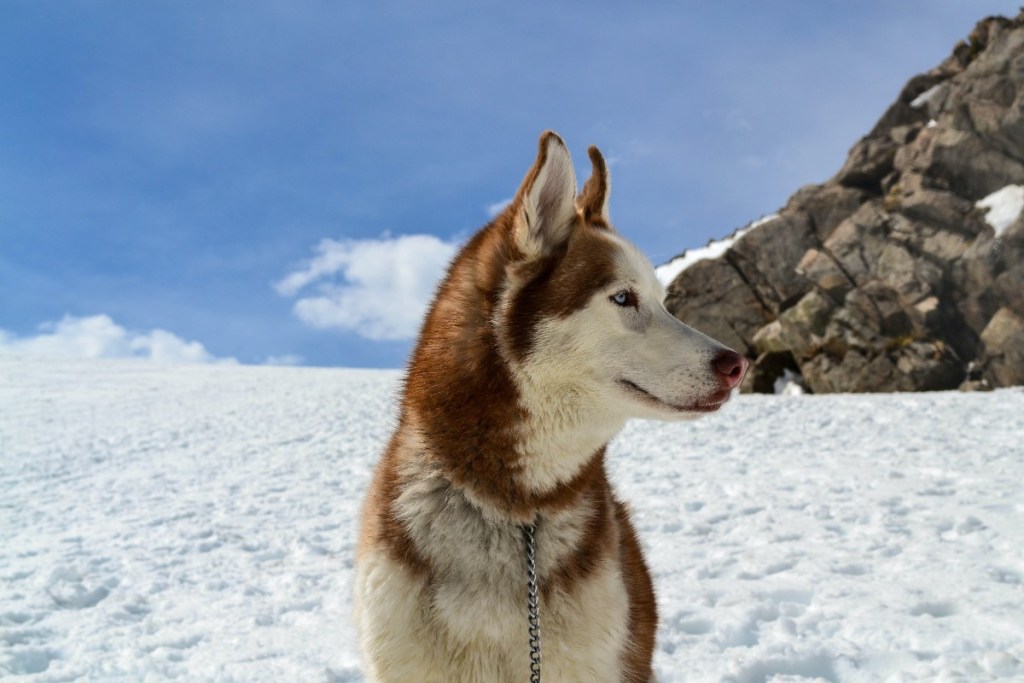
Don’t forget about mixed signals
Don’t assume your pooch is tired if you notice your husky yawning frequently when you’re entertaining guests or visiting a dog park. According to K9 of Mine, yawning is often a sign of anxiety. Another commonly misinterpreted sign is lip licking, which doesn’t necessarily mean your dog wants a treat. Incessant lip licking, like yawning, usually means your dog isn’t sure they feel comfortable and is trying to soothe themselves. Termed “calming signals,” habits like yawning and lip licking should be taken in context.
If you’ve spent several hours playing outside with your dog, then yawning is to be expected. However, if your husky begins to yawn and lick their lips when your friend visits for lunch, consider removing your pup from the area and give them a chance to relax.
Ultimately, your husky is one in a million. Don’t expect them to check off every box of typical sled dog behavior, and be patient if you’re still figuring each other out. Huskies are known for being highly energetic yet super friendly dogs, though some training and mutual understanding will go a long way for you both.


